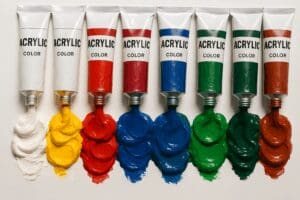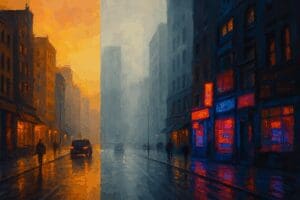Artistic expression is a complex dance of elements, one of which is the careful selection and application of color. While there’s no shortage of shades to choose from, the clever use of complementary colors can truly make a piece come alive.
Complementary colors are the colors that are directly opposite each other on the color wheel (1). This theory was first developed by Sir Isaac Newton, who arranged colors around a circle to demonstrate these relationships (2). In essence, every primary color (red, yellow, and blue) has a complementary color in the form of a secondary color (green, purple, and orange), and vice versa.
1. Color Wheel
2. Sir Isaac Newton’s Color Theory
The interaction of complementary colors is not just a matter of aesthetics, but also of science. When placed next to each other, these colors make each other appear more vibrant, a phenomenon often termed as ‘simultaneous contrast’ (3).
As an artist, understanding and using this color relationship can be transformative for your work. Here are three primary ways to incorporate complementary colors in your art:
**1. Creating Vibrancy and Contrast**
Pairing complementary colors can bring dynamism and dramatic contrast to your art. An excellent example is Vincent van Gogh’s ‘Café Terrace at Night,’ where he used vibrant yellows against dark blues, thus enhancing the luminosity of the café lights (4).
4. Vincent van Gogh’s Café Terrace at Night
**2. Creating a Sense of Depth**
Complementary colors can be used to add depth to a piece, as cool colors tend to recede, while warm colors tend to come forward. As an example, you can create a realistic landscape by using green and red to distinguish between foreground and background (5).
5. Using Color in Art: Creating Depth
**3. Enhancing Mood and Atmosphere**
Complementary colors can also play a vital role in setting the mood of your artwork. For instance, Claude Monet, the master of impressionism, often used complementary colors to capture the transient effects of light and atmosphere in his landscapes (6).
6. Claude Monet’s Use of Color
Leveraging these principles in your own artwork will depend on your unique artistic vision. There is no “one-size-fits-all” approach to color, so experiment, learn, and embrace the journey. After all, as Pablo Picasso said, “Colors, like features, follow the changes of the emotions” (7).
We hope this blog post encourages you to experiment with the power of complementary colors in your own artwork or browse the beautiful use of color in the works available for sale at Irish ArtMart
Disclaimer: The views and opinions expressed in this article do not necessarily reflect the official policy or position of Irish Artmart





